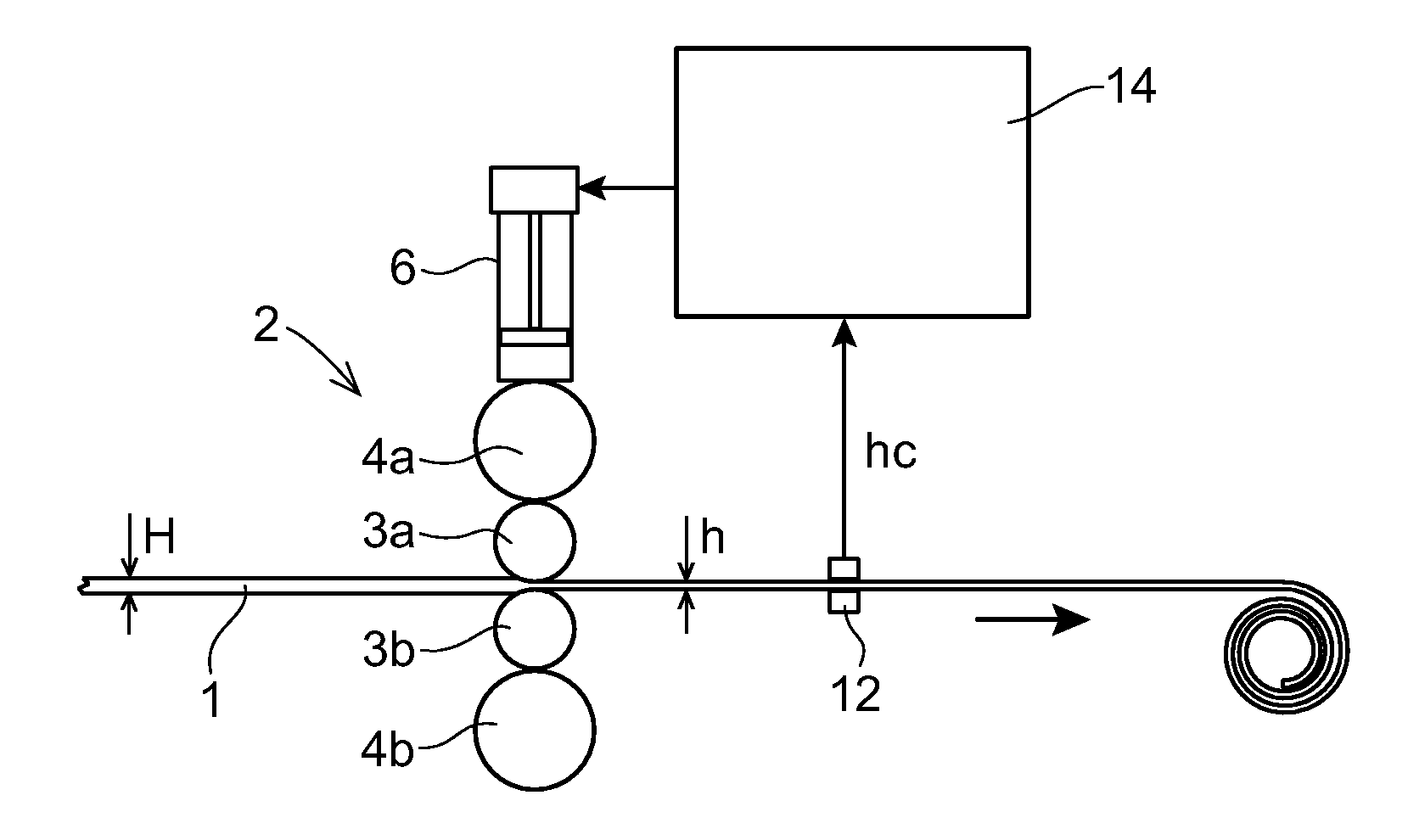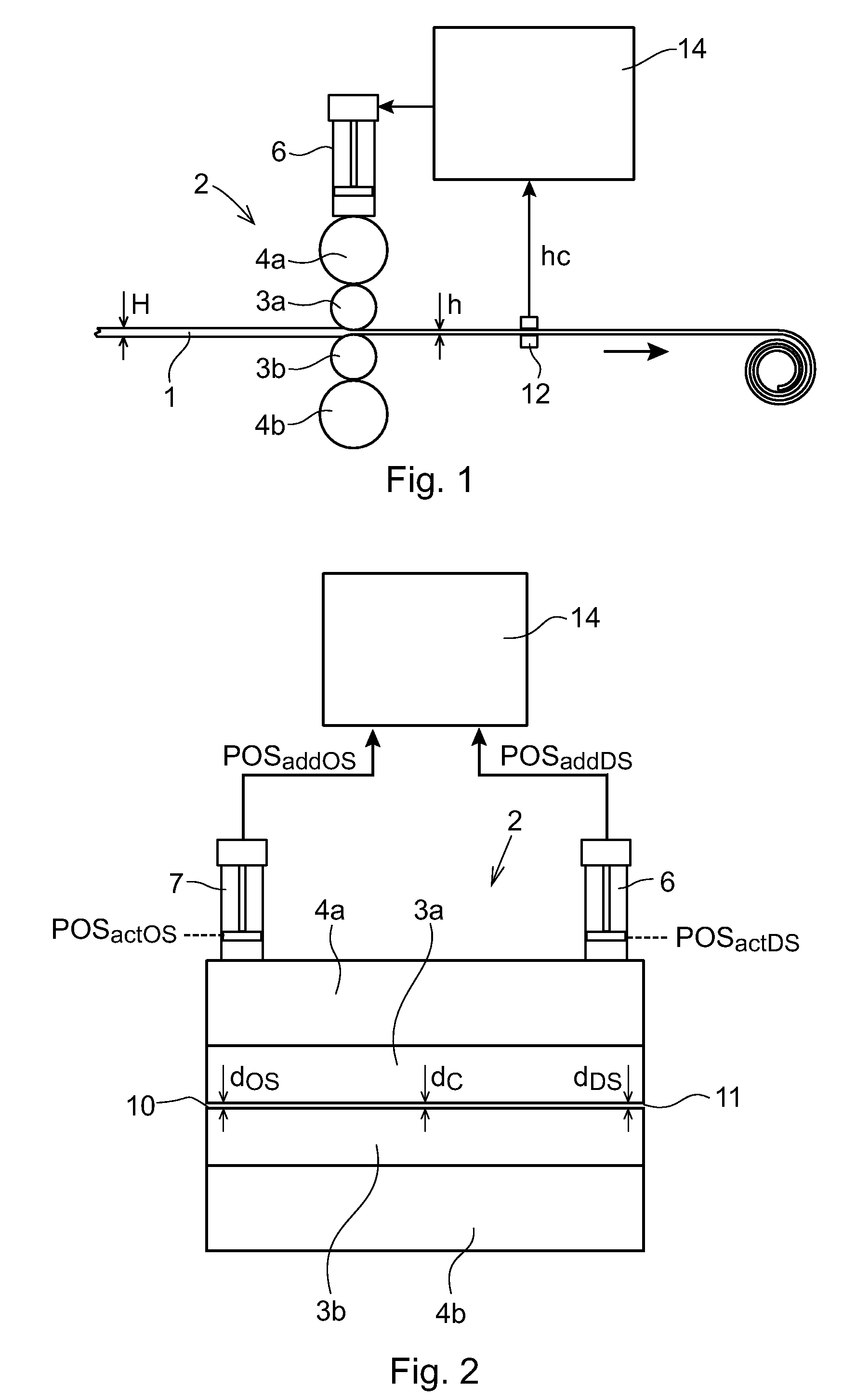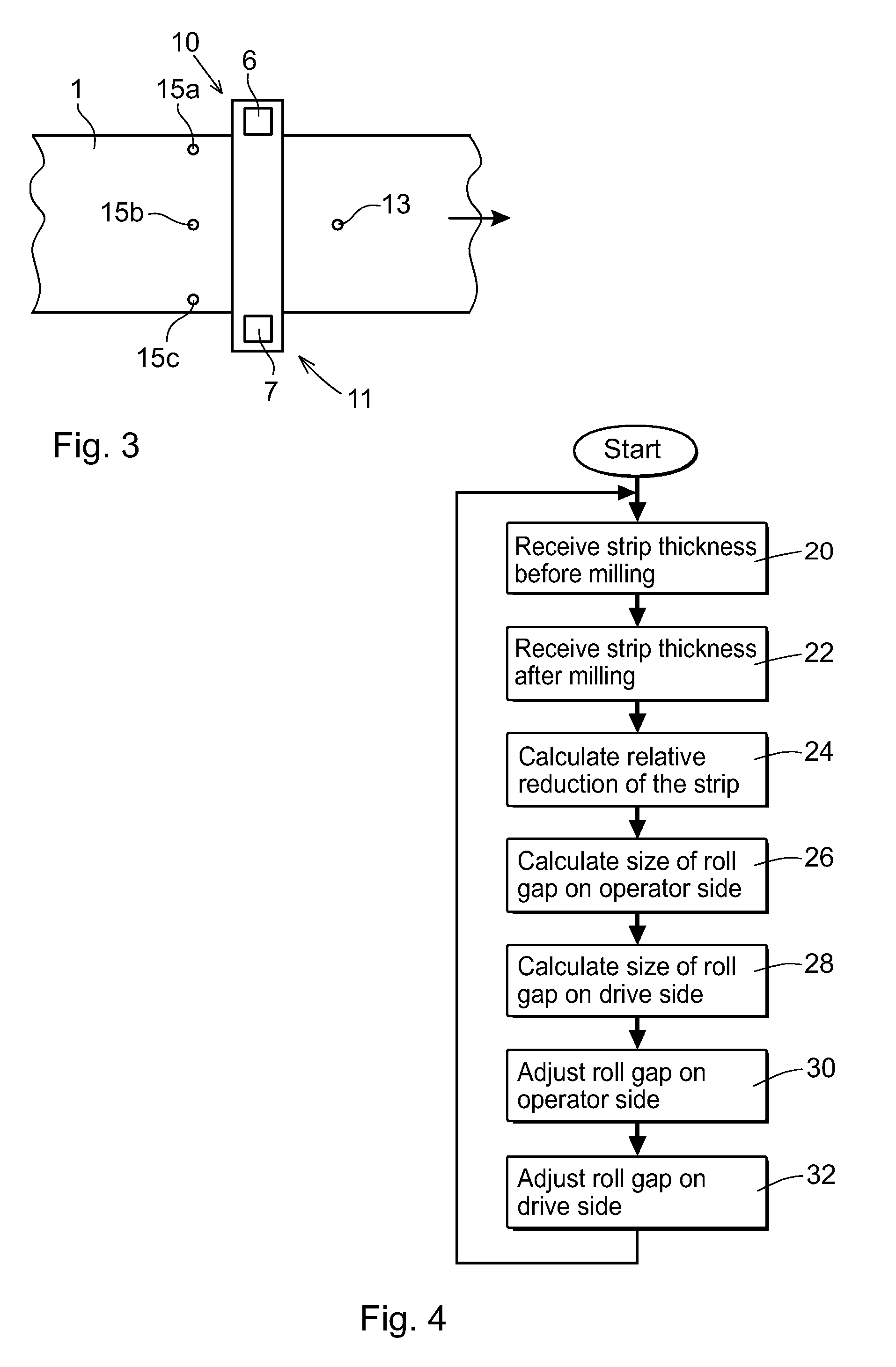Method and device for controlling a roll gap
a technology of a control device and a roll gap, which is applied in the direction of measuring devices, profile control devices, instruments, etc., can solve the problems of creating an asymmetric flatness error in the strip, flatness problems, and the strip will not be optimal
- Summary
- Abstract
- Description
- Claims
- Application Information
AI Technical Summary
Benefits of technology
Problems solved by technology
Method used
Image
Examples
first embodiment
[0033]FIGS. 1-3 show a rolling mill, including a device 14 for controlling the roll gap of the mill according to the invention, from different views. The figures show a metal strip 1 passing through a rolling mill 2 in a direction shown by an arrow. The rolling mill includes two main rolls 3a-b and two supporting rolls 4a-b. Two actuators 6,7, in this case hydraulic actuators, determine the distance between the main rolls 3a-b, also denoted the roll gap. The actuator 6 determines the distance between the rolls on an operator side 10 of the rolling mill and the actuator 7 determines the distance between the rolls on a drive side 11 of the rolling mill. The actuators 6, 7 independently control the size of the gap between the rolls on each side of the rolling mill. The rolling mill further includes a sensor 12 for measuring the thickness of the strip after the milling. The sensor 12 is located essentially at the center of the strip across the width of the strip, i.e. at essentially equ...
second embodiment
[0047]FIG. 5 shows schematically a side view of a rolling mill including a device 40 for controlling the thickness of a strip according to the invention. Components corresponding to those in FIG. 1 have been given the same reference numerals, and will not be described in more detail here. As can be seen in the drawing, the rolling mill further includes a thickness control system 42, which calculates a thickness correction POSadd for the roll gap based on a desired strip thickness href and a measurement of the strip thickness hc after rolling. The thickness correction is calculated as the difference between the actual thickness of the strip after rolling and the desired strip thickness. The thickness correction is in the order of μm. The device 42 is adapted to receiving the thickness correaction POSadd from the thickness control system 42, and to generate control signals to the actuators 6,7, based on the thickness correction and the amount of wedge shape in the strip thickness, suc...
PUM
| Property | Measurement | Unit |
|---|---|---|
| size | aaaaa | aaaaa |
| thickness | aaaaa | aaaaa |
| relative reduction | aaaaa | aaaaa |
Abstract
Description
Claims
Application Information
 Login to View More
Login to View More - R&D
- Intellectual Property
- Life Sciences
- Materials
- Tech Scout
- Unparalleled Data Quality
- Higher Quality Content
- 60% Fewer Hallucinations
Browse by: Latest US Patents, China's latest patents, Technical Efficacy Thesaurus, Application Domain, Technology Topic, Popular Technical Reports.
© 2025 PatSnap. All rights reserved.Legal|Privacy policy|Modern Slavery Act Transparency Statement|Sitemap|About US| Contact US: help@patsnap.com



